New Construction Phase Inspections
Too often purchasers of newly constructed homes believe, or are led to believe, that their new home does not need to be independently inspected prior to closing by an independent professional home inspector. And, because it is a brand new home so, "What could possibly be wrong"?.
They may feel that they can trust their builder because the builder or developer is providing some type of warranty that it will cover everything . . .
They may even believe that the local building inspection department will inspect the house during its construction. . .
The fact is that the actual builders of your new home are sub-contractors that the builders/contractors/developers has hired. Most sub-contractors are unlicensed and unregulated so compliance with industry standards within their perspective field of expertise (Electrical, Plumbing, Air Conditioning & Heating, and general construction) will depend upon their skill and knowledge of current building codes.
To make a profit, Builders will sub-contract the various work out to the lowest bidder. The low bidding sub-contractor also needs to make a profit. Although there are building codes that builders/contractors/developers and sub-contractor must abide by, not all jurisdictions have a local building code inspection department or code enforcement. Because the builders/contractors/developers and sub-contractor know that most homeowners don't have the knowledge or skill to judge their workmanship and that they know that there will be no local jurisdiction building code inspection performed, they can cut corners to save themselves hundreds, if not thousands of dollars at your expense.
Who is going to tell you that the builders/contractors/developers or sub-contractor cut corners at your expense?
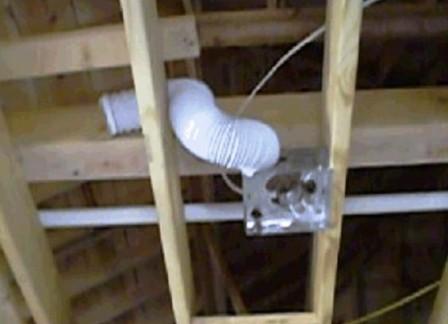
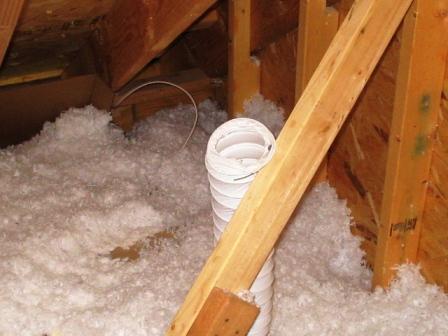
The builder saves hundreds at the expense of the home owner.
Who is going to tell the builder/contractor that they are wrong?
In many cases, the unsuspecting new home owner is unaware of any conditions until a situation occurs, usually after the builders warranty has expired (see our One Year Warranty Web Page) or if they decide to sell their home in the future.
In other cases, the unsuspecting new home owner does not find out about any conditions until they decide to sell their home. When the prospective buyer of your home hires their own home inspector to perform an inspection, the inspector will list and describe any conditions that were not performed within industry standards and the prospective buyers will want the conditions found - REPAIRED - BY YOU ! ! !
Why would you want to pay for the builders/contractors/developers or sub-contractors errors in the construction of your new home?
A new construction phase inspection provided by Homeland Home Inspectors will ensure that the builder is performing the construction in accordance with industry standards.
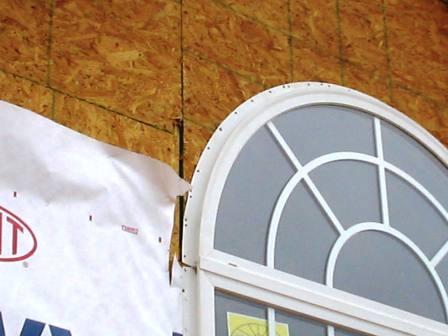
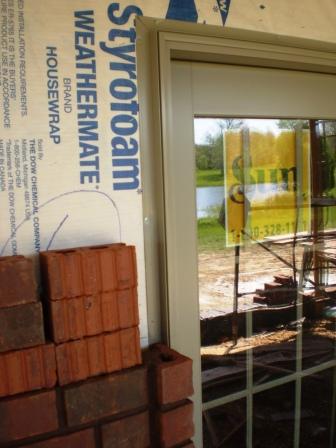
Eventually these areas will leak, moisture will enter the building and cause major damage over time.
The Inspection Phases of Construction can Include:
Phase 1 - Elevation, Grading, Drainage, Foundation
Phase 2 - Framing, to include wood or steel framing, exterior wall and roof sheathing, exterior trim and siding, windows and exterior doors, and roofing.
Phase 3 - Rough-in Plumbing, Mechanical and Electrical. This includes water and waste/vent piping, setting of the water heater; ductwork, venting and furnace installation; wiring and electrical panel installation.
Phase 4 - Insulation and Drywall . This includes wall insulation, (but not attic insulation at this time), drywall installation, tape and texture. This stage cannot begin till the rough stage inspections are passed.
Phase 5 - Paint, Trim, Finishes and usually includes the Final Walk-Thru. This includes finished flooring, cabinets, countertops, wall tile, mirrors, shower doors, final electrical (including fixtures), final plumbing (including fixtures), and final mechanical.
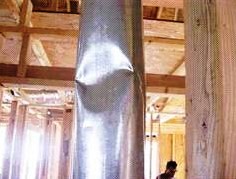
The builder said not to worry about this small dent.
The drywall will cover it up!
Who is watching out for your best interests?
TYPICAL NEW CONSTRUCTION ERRORS
The following are some of the conditions that have been found in the course of conducting inspections on newly constructed homes:
These are not all of the conditions that have been found in newly constructed homes nor are they found in every new home that is inspected. However, customers were extremely grateful that these items were found before they closed on their new homes. Keep in mind that most builders/contractors/developers do their best to build a good home for their clients. The conditions found are typically the result of the complex logistics of new home construction.
There are a large number of sub-contractors/trades-people involved in the construction process and they often work on the home at intervals rather than continuously; that is the nature of site-built construction. Most builders/contractors/developers understand that some things may "slip through the cracks" during construction. When these things are brought to their attention, they typically will simply add them to their own punch list of final detail work and they will be taken care of by the appropriate sub-contractor/trades-person.
We recommend that all purchasers of newly constructed homes obtain as much of the applicable information outlined below as possible from their builder/contractor/developer. Blueprints Engineering documents Soils reports Well documents Septic system documents Copy of the certificate of occupancy Copy of signed-off permits Warranties for the following: Water heaters Heating plants and/or heating system components Gas log units Gas fireplaces Fireplaces Wood and pellet stoves Fireplace inserts Air conditioning equipment Kitchen appliances Plumbing fixtures and fixture trim Electrical devices and fixtures Automatic garage door operators Cabinets and counter tops Windows Doors Garage vehicle doors Floor covering materials and installation Roof covering materials and installation Surface finishes; wallpaper, paint, stain, etc. Siding and veneers Masonry work Security systems Landscape materials Landscape irrigation systems Builders warranties
Your builder will be able to provide you with many of the items listed above or with the names of the manufacturers so that you can write and obtain specific warranty information on the products in your new home.
Obtain brands and identification numbers of interior and exterior paints, stains, and finishes and ask your builder for some leftover paint and stain for touch-up purposes after you move into your new home.
Keep all of these documents together and in a place where you can locate them. They may be helpful to you, and the next buyer of your home will not only appreciate having them but also will be impressed with your attention to these details.
Did they cut corners to save a few dollars at your expense?